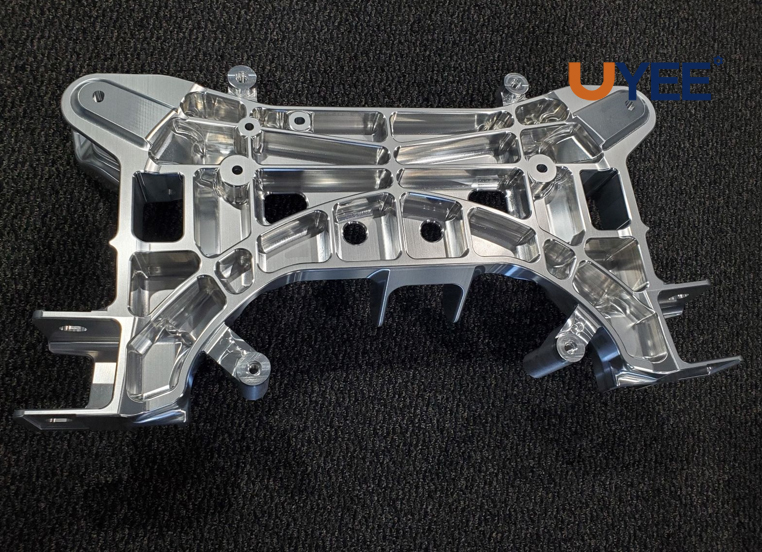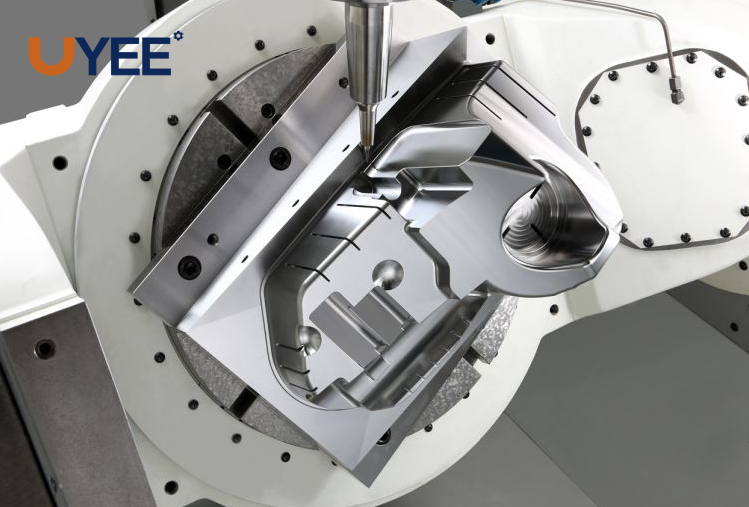CNC machining is the most cost-effective means of on-demand manufacturing for generating accurate components, notably metal parts of diverse kinds with exceptional physical qualities. Although this form of component manufacturing has been around for some time, technological developments have lowered the cost of CNC machining, making it more accessible to producers.
In this post, we will discuss the various ways to calculate CNC machining costs and things you need to consider while doing so.
Calculating the cost of CNC machining might seem to be rather difficult. Several variables are considered, making the final cost evaluation more complicated than other manufacturing processes.
Quick Introduction to CNC Machining
CNC machining is a subtractive manufacturing process. It implies that the activities include the removal of material. We may use it to fabricate essential components from various materials, including metals and polymers.
The first line encapsulates the core of CNC machining, distinguishing CNC turning and milling from another computer numerical control-based industrial processes. Both turning and milling begin with a bigger block of material and work their way down to the desired output.

Calculating Machining Costs
Several factors determine the cost of CNC machining. Specifically, labor and machine expenses, tooling and wear material, and setup costs.
Considering all of them may be challenging since an exact evaluation of each category is difficult to arrive at. Simultaneously, there is no way to ignore any of these components of the ultimate price.
Time duration
Before assigning a value to any of them, we need to determine their time consumption. And this is also the most challenging stage of the whole procedure.
Almost every decent workplace is equipped with some computer-aided manufacturing software. The most basic kind is CAD-CAM software, which combines design and manufacturing capabilities.
G code is generated by CAM software and is responsible for directing the cutting heads, spinning rates, etc. Essentially, anything about the manufacturing side of the process. M Code specifies tooling adjustments, coolant use, and other parameters. All of this is accompanied by time estimates for each procedure.
As a result, we can examine how long the process takes, how much work a single tool does, and how often tool swaps occur. Additionally, the machine operator may alter the program to match his equipment better or observe a more efficient production method. However, the critical element is here – CAM software can estimate the time necessary to fabricate a CNC prototype machining.
And it’s all based on three-dimensional models. If you lack them, the price quotation is often based on a combination of Excel sheets and common sense paired with prior experience. And, although incorporating intuition may seem to be very irrational, it is not.
That is also why AI makes automating the whole pricing process feasible. We may arrive at a reasonably appropriate pricing point by comparing the component specifications to past works, manufacturing schedules, and prices.
Costs of the Machine
The customer is responsible for reimbursing the shop for the purchase price of the equipment. The typical machine shop requires 5000 hours to recoup its original investment. Even second hand CNC equipment marketplace prices may be rather expensive, even though these machines are probably less cost-efficient due to their speed constraints and lack of automation.
Assume that your part’s machining time is 0.5 hours. Then, the first step toward determining the ultimate price is to multiply the manufacturing cost by 1/10000th of the machine price.
Standard hourly rates for 3-axis machining are in the region of $35. Multi-axis is more expensive, reaching a price of three times that of a single axis. However, depending on the design of your item, the time savings associated with these more sophisticated CNC centers may be significant.
How to pick a CNC machine type?
CNC machining involves a variety of procedures. Another consideration is the machine’s efficiency. CNC machines have made remarkable advancements throughout the years. Early NC and CNC machines were primitive compared to today’s extremely complex CNC machines. Modern machinery is far more efficient and speedier. In the long run, increased speed results in lower component manufacturing costs.
How to Select CNC Machining Tooling?
Additionally, the expenses of cutting tools affect the entire cost of equipment. This cost is affected by the tool material, coating, and shape. For example, cemented carbide tools cost more than twice as much as tool steel tools due to their increased hardness, heat resistance, and ability to tolerate severe speeds.
Why is CNC Milling more costly?
Mills are often more expensive than lathes because of their more complicated moving components, the difficulty of setup, operation, and maintenance, and capability for more sophisticated operations. As a result, CNC milling is often more costly than other operations.
Milling machines come in various configurations with differing degrees of complexity and capabilities. A milling machine with more axes will be more costly. CNC machines of the modern-day often feature three or five axes.
Labour and expenses on setup
A manufacturing engineer can assess the producibility of your design and find out if the designed components have defects to suggest fixes. Having access to this level of knowledge will cost money.
The manufacturing engineer will take time setting up the machine for a bespoke CNC project and ensuring that everything is done correctly.
Each component requires a unique setup, which is why mass manufacturing dramatically cuts the price per part.
Costs of Materials
CAD applications can do very precise mass calculations for components depending on the volume of the part and the material’s density. On the other hand, CNC machining costs incorporate more material than the finished product indicates. As a subtractive manufacturing technology, quite an amount of scrap is generated.
CNC milling machines begin their job with a block of material. As a result, the overall measurements and a little more are required to create the finished component.
A circular stainless steel bar is often the starting point for turning. It’s important to remember that, although your component has precise dimensions and the “extra bit” does not have to be much bigger than the overall dimensions of the finished product, the material comes in conventional sizes.
Let us say you need to create a shaft with a maximum diameter of 43mm. Here, 45 mm is the closest standard round bar. It is the raw material for the CNC machined parts, and further turning operations are required to achieve the base dimensions.
The material’s machinability, a critical component
Along with the cost of materials, another significant cost variable is machinability. Additionally, materials that are difficult to machine require additional resources such as cutting fluids, power, and cutting equipment.
Tool Changes and Tool Wear
As previously stated, the CAM software determines which milling equipment to employ to manufacture your product. Your tool library determines it, and the production engineer may make appropriate adjustments.
It is not unusual for a certain project to need a specialized instrument, as is also the case with metal bending services. While the tools will remain in the workshop, the customer may be charged an additional fee if the tool is too specialized to be of much use afterward.
Additionally, tool wear is considered based on the time estimates and tool lives specified in the instructions.
Finally, unless the component is very basic, a change of tools is typically required to create it. While contemporary CNC machining company may support live tooling, not every machine shop has this capability. Consequently, this adds another step of human work to the process, which is reflected in the final machining cost.
The significance of estimating CNC machining hourly rates
 Calculate the hourly rate for CNC machining. It is critical when dealing with complicated geometry or when particular finishing is required. If you have minimal experience working with a CNC machine shop, this could be the best time to practice your CNC skills.
Calculate the hourly rate for CNC machining. It is critical when dealing with complicated geometry or when particular finishing is required. If you have minimal experience working with a CNC machine shop, this could be the best time to practice your CNC skills.
Each machine shop operates differently and charges differently as well. Most bills are prepared hourly and include overhead and material expenses. Because quoting and estimating will not always provide a precise figure, it is helpful to understand the elements that impact price.
Nonetheless, you’ll save more money in the long term due to their expertise. Pricing is often more competitive when using advanced quotation tools and industry-leading CAD/CAM applications.
How many resources can you save by better grasping the elements affecting CNC machining? Understanding the variables may assist you in determining which methods to utilize or avoid. Additionally, it might assist you in comprehending what designers and engineers are saying throughout testing and certification.
Bottom Line
We hope you have a solid knowledge of calculating CNC machining costs by taking into account different factors. The CNC machining process is critical and is predicated on the required accuracy. That is why the services are not inexpensive, and they should not be. After all, highly trained machinists labor carefully to meet stringent industry tolerances and standards. Without human labor, robots and software would not keep up with demand. Our software can quickly determine laser cutting charges. The approach takes into consideration material consumption, cutting time, and shape.
